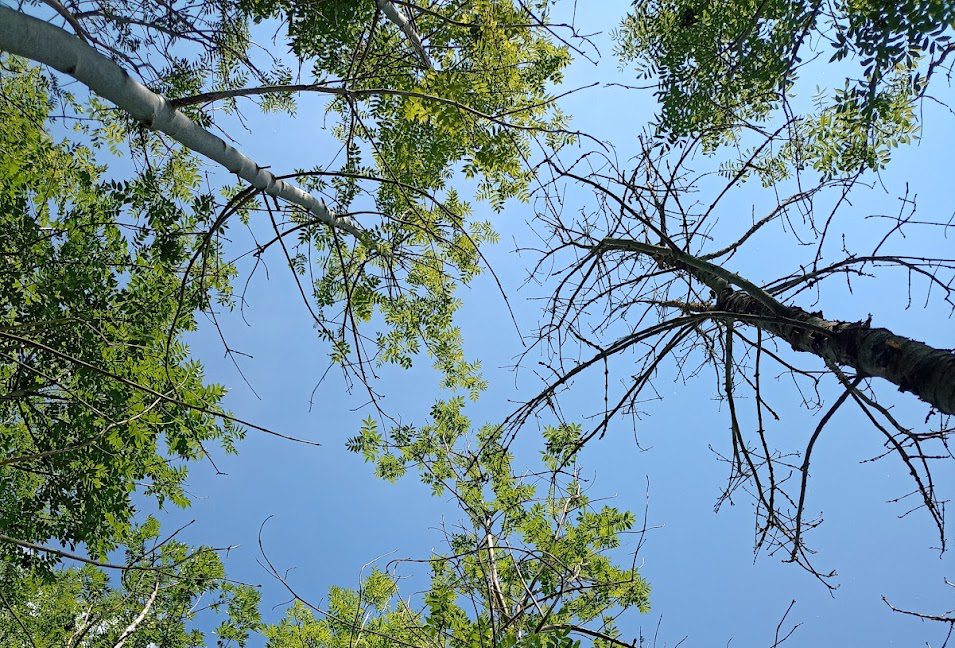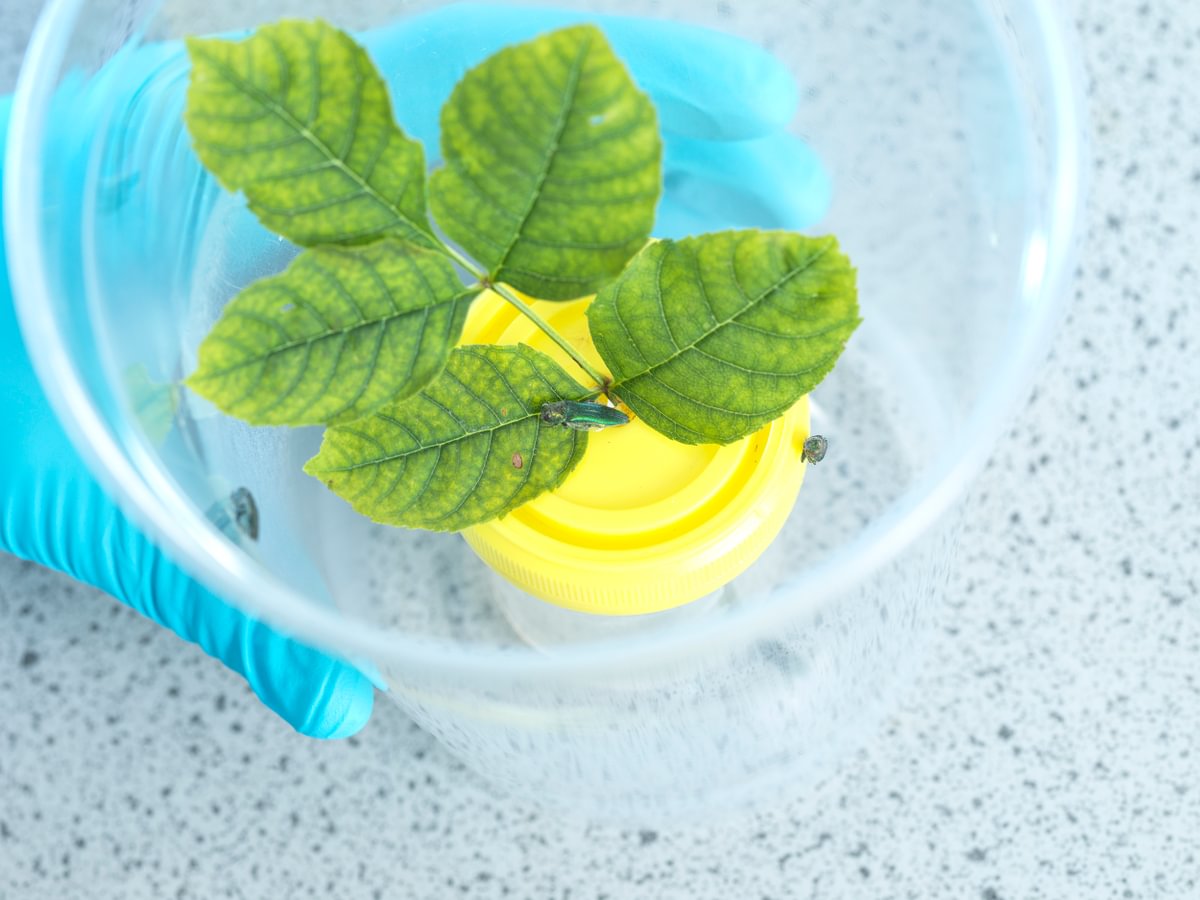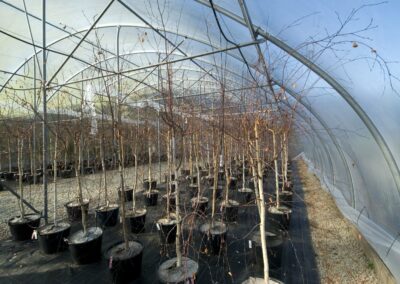Dodging the double whammy – ash dieback and emerald ash borer
Project leads Dr Katy Reed | Forest Research; Prof James Brown | John Innes Centre
Context
Over the last 20-30 years, ash trees in Britain have been affected by an invasive fungus (Hymenoscyphus fraxineus) that causes ash dieback, a disease which has killed large numbers of trees here and abroad. Another potential additional threat looming on the horizon is the emerald ash borer (Agrilus planipennis), a bark boring beetle native to Asia.
Previous research has led to the prediction that ash dieback will exacerbate the damage caused by the emerald ash borer (EAB) beetle. However, tree resistance to the ash dieback fungus could reduce the impact of the beetle.
Research aims and objectives
Aim
Produce many experimental European ash (Fraxinus excelsior) plants from breeding families identified as susceptible to ash dieback, resistant, or segregating, and also produce plants from EAB-resistant Asian ash species and EAB-susceptible American ash species.
Objectives:
Experimentally test risk to European ash posed by an invasive beetle related to the emerald ash borer
- Agrilus convexicollis is a non-regulated invasive bark boring beetle believed to be a secondary colonist of diseased ash trees, which seems to be already spreading widely in the UK. It is related to the EAB but is thought to be much less destructive to living trees. The project team will test if the larvae of this beetle can colonise healthy ash, working in the Forest Research containment facility.
Investigate the correlation of genetic resistance to ash dieback and to Agrilus beetle species
- Working in the Forest Research containment facility, using ash families with different levels of resistance to ash dieback, the team will test whether resistance to ash dieback makes trees more resistant to EAB.
Assess how coinfection influences the development of ash dieback and emerald ash borer damage
- The team will inoculate trees with both the ash dieback fungus and EAB larvae within the Forest Research containment facility. They will test the hypothesis that there is more damage to ash trees when they are attacked by both ash dieback and Agrilus together and determine how co-infection influences development of both the fungus and beetle larvae.
Assess the attractiveness of healthy and diseased ash to Agrilus beetles
- Female beetles who are ready to lay their eggs will be exposed to the odours produced by trees with and without ash dieback, to see if there is a preference between the two.
Expected outcomes
- Development of innovative methods to work with a pest and a pathogen together.
- Collection of information resulting in a report on the risk posed to UK ash by Agrilus convexicollis.
- Better understanding of the links between resistance to ash dieback and resistance to the emerald ash borer.
- Determining how attractive diseased and healthy ash trees are to Agrilus beetles.
- The data produced in this project will feed into the UK government’s strategies for breeding ash trees resistant to ash dieback, and for managing the emerald ash borer if it is found in the UK.

Ash dieback damage
Body image: Daniel Wood, Royal Botanic Gardens Kew
Glossary & Key Terms
Agrilus convexicollis beetle
A non-regulated invasive bark boring beetle believed to be a secondary colonist of diseased ash trees. It is related to the emerald ash borer (Agrilus planipennis) but is thought to be much less destructive to living trees.
Ash (Fraxinus excelsior)
A native broadleaved tree with excellent timber properties that is an important host for many species of flora and fauna and consequently of high ecological value.
Ash is under severe threat from ash dieback disease (Hymenoscyphus fraxineus), and its abundance in the British landscape is likely to decrease. The ability to plant ash is now severely restricted due to concerns over tree health. Ash is categorised as a principal tree species. For more information, see Ash (AH) – Forest Research.
Ash dieback (Hymenoscyphus fraxineus)
Emerald ash borer (Agrilus planipennis)
Inoculate
Pathogen
Share this project on social media
Related Projects
Our Partners
Social media
Explore
Contact
© 2022 Centre for Forest Protection. All rights reserved.


